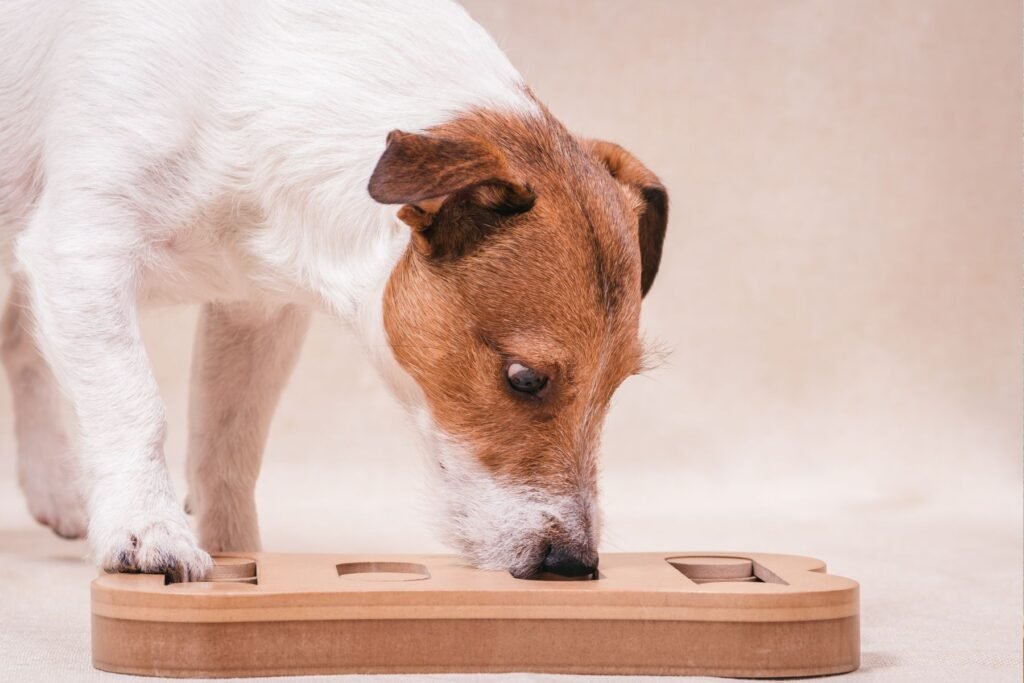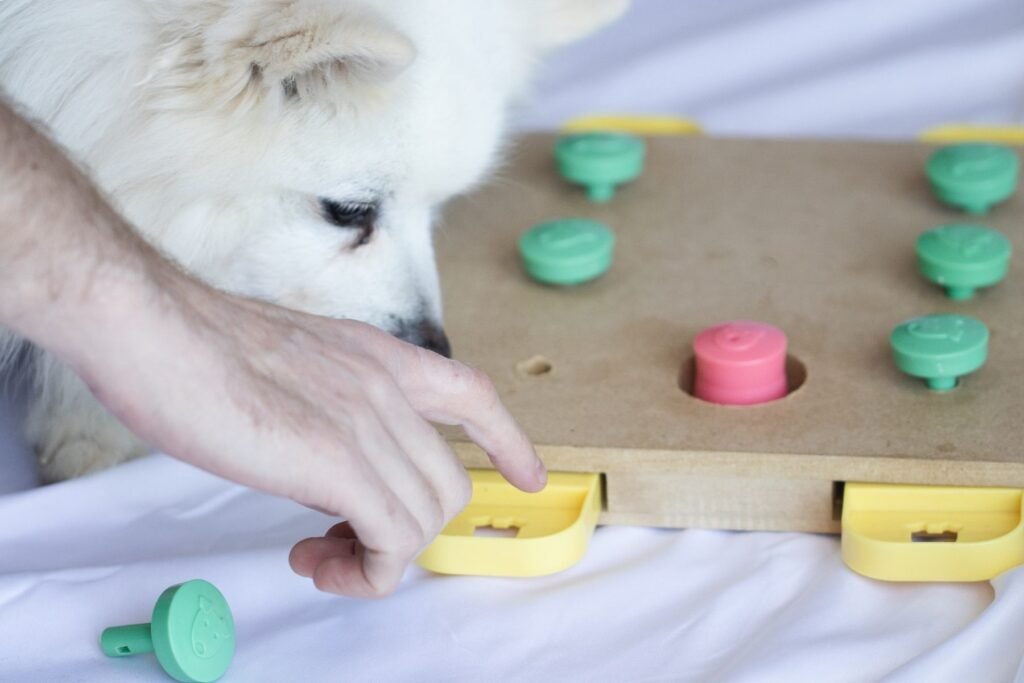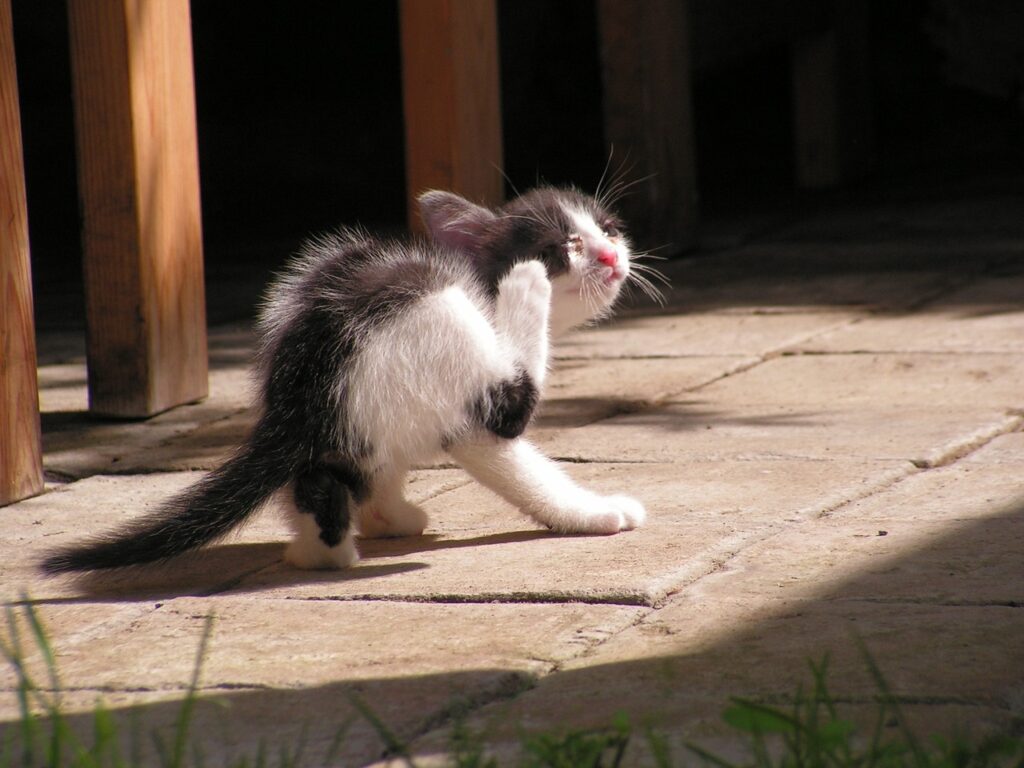So, you’ve bought the best cat puzzle feeders or the best dog puzzle feeder – now what? Don’t just plonk it down and expect your pet to love it! There’s a right way to use puzzle feeders, and we’re going to share it here!
I’ve been a vet for 8 years and puzzle feeders are one of my go-to favourite aids for behaviour problems and general stress relief for pets. My own pooch, Pixie, has several different types, and I used to provide them to my foster cats when I worked in a cat rescue. In other words, I have a fair bit of experience using puzzle feeders, so these are my top tips.
Why use a puzzle feeder?
As a pet parent, your pet’s mental and physical health is your responsibility. Puzzle feeders bring mental and physical health benefits to both cats and dogs. Plus, they’re great for your bond with your pet. Want to learn more? Here’s links to our articles about the benefits of puzzle feeders for cats and the benefits of puzzle feeders in dogs.
Do puzzle feeders work?
You’re probably wondering if this is all conjecture or if puzzle feeders for dogs and cats actually work. A recent study showed that most owners using them felt that puzzle feeders helped behavioural problems and reduced food seeking. There have also been studies showing benefits in shelter dogs. In cats, there’s less scientific evidence – one study showed no change in levels of activity of cats fed with feeding toys compared to a bowl, but it was a very small study and it only looked at one benefit.
Puzzle feeder types explained
There are lots of different types of food puzzle toys for pets, so let’s explain the differences:
Stationary puzzles vs moving puzzles
Some food puzzles are meant to be used by a stationary animal, while others encourage pets to move around a lot. Stationary ones are more suitable for pets recovering from injuries, while those that encourage movement are good for pets with arthritis or who need to lose weight.
Wet food puzzle toys vs puzzle toys for dry food
The type of diet you feed is also important. Most puzzle feeders can take dry food, but not all can take wet food – you’ll need to take the intended food type and how easy it is to clean into account when choosing the right feed toy for your pet.
The effect of breed
Brachycephalic (short-snouted) breeds might struggle with some toys. Some breeds might also prefer certain toys, depending what they’ve been bred to do. For example, terriers love scent work and a snuffle mat might be a good choice, while collies are often ball-driven, meaning they might enjoy a treat ball toy.

Choosing a puzzle toy
With the above in mind, it can be hard to choose a good puzzle toy for your dog or cat. We’ve taken the guesswork out of it. In our buying guides, we’ve named the best toy (in our opinion!) for a variety of different situations, like the best stationary food puzzle for dogs recovering from injuries.
How to use a pet puzzle feeder for best effect
Right, now the formalities are out of the way let’s move onto discussing how to use puzzle feeders. As I mentioned at the beginning, there’s no point buying the best puzzle feeder if you aren’t going to use it properly. Here’s what to do:
1. Introduce slowly
When you first get a puzzle feeder, only put a small amount of your pet’s food in it, and give most of it in a bowl. That way, they won’t be hungry when they try the puzzle for the first time, which reduces the risk of frustration. For cats and nervous dogs, the food toy might have to be left in their room for some time before they’ll get over their fear of new things and give it a go.
2. Show them how to use it
If your chosen puzzle toy has several levels of difficulty, set it to the easiest option. Then, show your pet how it works. For treat balls, set it so the hole is down and a biscuit is under it – you want instant reward for moving the ball. For other toys, scattering biscuits nearby might encourage them to explore the toy. Help them tip and slide the various moving parts at first – by showing them how to do it you’re avoiding frustration and building their confidence.

3. Variety adds interest
Although a puzzle feeder is *slightly* more interesting than a bowl, it’s not brilliant on its own. You actually get the best effect when you have several puzzle feeders and you swap them out regularly, so that each day is different. You can also combine puzzles in some cases to make it harder. For example, you could hide one of our best puzzle feeders (like a treat ball) inside the rolled towel DIY puzzle feeder. And on that note, you don’t have to buy a different puzzle feeder for every day of the week – buying 3-4 different ones and then using some DIY food toys for cats and dogs too can be a really good way to provide a variety of puzzle toys while keeping costs down.
How much food should I put in the puzzle toy?
Some people use the puzzle toy for the whole portion of food. In general, this is the easiest option once your pet gets the hang of using the feeder, since you only need to fill (and clean!) one thing. That said, it’s fine to feed half their portion in a bowl and the other half using the feeder if this is easier for you, for example if your pet needs medications in their food. Make sure you’re using the proper portions for your pet’s age and current weight – the food in the puzzle toy should be part of their daily calorie allowance, not additional to it. You can check how many calories your pet should be having here.
Cleaning the puzzle feeder
Look out for puzzle feeders that can easily be cleaned, as you’ll want to clean them as often as you clean their bowl. For wet food, that’s after each meal. For dry, you can usually get away with a rinse every couple of days and a full clean weekly.
Conclusion: Food puzzles are easy to use
After the initial set up of buying the best feeding puzzle for your dog or cat, and then helping them use it the first couple of times, food puzzle toys can be a really excellent way to give pets something to do while you’re out the house, reduce stress and boredom, and even lose weight.
If you liked this article, you might want to read more about the benefits of puzzle feeders for dogs. Or, if you’ve read our article and realised you need more puzzle feeders, our best dog puzzle feeder buying guide might help!
- Why Do Dogs Sleep So Much? A Vet Explains What’s Normal (and What’s Not) - March 27, 2025
- 10 Signs Your Dog Needs Probiotics – Vet Explains When to Supplement - March 14, 2025
- The dog gut microbiome explained (by a vet) - March 10, 2025



